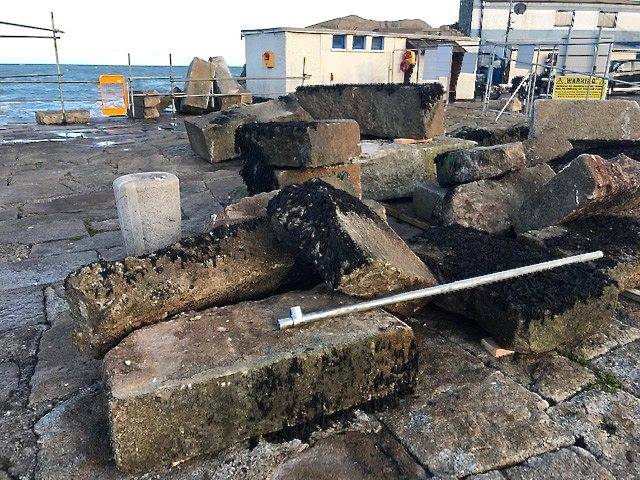#Bullock200 - The scenic south Dublin Bay harbour at Bulloch, Dalkey, is where construction on the stone-cut structure began in the winter 1818/19 and to celebrate the 200th anniversary a series of talks as Afloat previously highlighted will continue to May 2019.
The famous Dalkey landmark, used locally sourced granite to built the harbour for the Ballast Board (now managed by Dublin Port Company). The primary purpose of the harbour was to ship the granite from their quarry on Harbour Road to construct the city quays.
The present walls were built over the breakwater of the medieval fishing port in the tidal rocky creek at the foot of Bullock Castle. See previous coverage photo presenting the harbour in more sequal times! compared to the recent scene as depicted above.
Organisers of the monthly 'Bullock 200' lecture talks (p.17), the Bulloch Harbour Preservation Association (BHPA) and Dublin Port Company will be held in the Dalkey Castle & Heritage Centre.
Admission is free but places should be pre-booked through the Heritage Centre by emailing: [email protected]
Tuesday 4 December 8pm - The History and Heritage of Bullock Harbour
Rob Goodbody, Historic Building Consultant & Local Historian
Tuesday 22 January 8pm -The Building of Bullock Harbour
Elizabeth Shotton, Associate Professor, UCD School of Architecture, Planning & Environmental Policy
Tuesday 12 February 8pm - Bullock Harbour into the Future; Monitoring and Repairs
Eamon McElroy, Port Engineer, Dublin Port Company
Tuesday 12 March 8pm - Port Collections; History of the Port and the Port Archive
Lar Joye, Port Heritage Director, Dublin Port Company
Tuesday 9 April 8pm - Dublin Bay Biosphere
A Panel Discussion
Tuesday 9 May 2019 - Hugh Leonard Walk
with Danielle Keyes-Byrne
The talks are been supported by the Dalkey Community Council, Dalkey Tidy Towns and the Dalkey Castle & Heritage Centre.
As for the Dublin Port Company update on Bullock Harbour Storm Damage (Notice to Mariners No. 31) click here. As mentioned above in the photo-caption, repairs work to the harbour's main pier breakwater began last month and is due to be completed at the end of January 2019.
For much more on the history of the harbour and present day initiatives, among them the up-keep and maintenance of Bulloch (or spelt Bullock) Harbour, between the BHPA, DPC and DTT over the past couple of years click here.

























